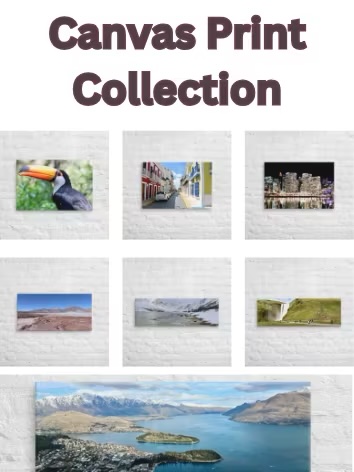How to Take a Day Trip to Masada

How to Get to Masada from Tel Aviv/Jerusalem
Masada is one of the most visited sites in Israel and can easily be reached from both Tel Aviv and Jerusalem as part of a day trip. Before my visit, I spent some time researching how to take a day trip to Masada. It turned out that there are quite a few ways to get to Masada. These ways include renting a car, taking a tour, and public transportation.
Masada is 160 kilometers from Tel Aviv and 100 kilometers from Jerusalem. Under normal driving conditions, it will take around two hours to get to Masada from Tel Aviv and one and a half hours to get to Masada from Jerusalem.
For those who don’t want to rent a car and prefer to be led around by a guide, there are plenty of tours that visit Masada. These tours typically pair Masada with a visit to the Dead Sea.
Another option to get to Masada is to take public transportation. There are public buses that run from both Jerusalem and Tel Aviv to Masada. These buses cost between ₪ 25 ($6.50) and ₪ 40 ($10.50) and take about twice as long as traveling by car.
Whatever option you choose to visit Masada, be sure to stop at the Sea Level Marker. This landmark shows the exact location where the road drops below sea level. The Sea Level Marker is a popular place for photos, and tourists will likely be approached by a vendor and their camel. Please do not pay to ride this camel. Camels are not meant to walk on the concrete, and it did not appear that this camel was being properly cared for.

How to Take a Day Trip to Masada - Table of Contents
- How to Get to Masada
- Why is Masada Important?
- Arriving at Masada
- The Masada Cable Car
- Views from Masada
- The Commander’s Residence at Masada
- The Quarry at Masada
- Storage at Masada
- Mosaics at Masada
- The Upper Terrace at Masada
- The Bathhouse at Masada
- The Cistern at Masada
- The Synagogue at Masada
- The Roman Camps at Masada
- Drawing Lots – Mass Suicide at Masada
- “Masada Shall Not Fall Again”
- Video Highlights of My Masada Tour
- Masada Tours and Packages
- Support Buzzin’ Around the World – Visit Our Affiliates
- Earning Points and Rewards
- Related Content
Disclaimer: Buzzin’ Around the World strives to provide accurate and up-to-date information based on our research at the time of publication. We respect all applicable laws and fair use principles. If you believe any information is incorrect or violates regulations, please contact us at buzzinaroundtheworld@gmail.com.
Affiliate Links and Reviews: We use affiliate links to generate income and may receive a commission at no additional cost to you when you use our links. We strive for honest and transparent reviews, even for products which we receive compensation.
Content Creation: Our content is based on our own travel experiences. All photos are our own unless otherwise stated. We sometimes utilize AI tools to assist with tasks like generating titles, summarizing content, and improving organization.
For more information: For more information, please click HERE to visit our private policy page. We can be reached at buzzinaroundtheworld@gmail.com.
Why is Masada Important?
Masada is an ancient Jewish stone fortress built high atop the Dead Sea. The fortress was one of the two palaces built for the Jewish leader Herod the Great, who ruled from 37 BC to 4 BC. Masada is best known for its role in the first Jewish-Roman War. In 74 AD, led by the Roman Governor of Ludaea, Lucius Flavius Silva, the Roman army surrounded the fortress and built a ramp that approached the west face of Masada. As a battering ram made its way up the ramp, Masada faced a surely impending Roman siege. Rather than be captured and enslaved by the Romans, 960 Jewish Sicari Rebels decided to commit mass suicide.
Masada has been part of Israel since its creation in 1848 and is a strong representation of the hardships the Jewish people have faced. Members of the Israeli Defense Forces are sworn in at Masada during a torch-lit ceremony.
Citizens of Israel have declared that “Masada Shall Not Fall Again!”


Today, Masada is over 2,000 years old and is one of the most visited places in Israel. The fortress has undergone extensive restorations, but parts of the original Masada still exist. In the photo below, you can see a black line. Anything below the line is original, and anything above the line has been restored.

Arriving at Masada
I visited Masada as part of a tour, which was run by the company BienHarim Tours. After meeting our guide Omri and driver Mohammad, we departed from Tel Aviv at 8:00 am and arrived at Masada around 11:00 am. On the way to Masada, we stopped at the Ahava Cosmetics Factory and the Below Sea Level Marker. Upon arriving at Masada, Omri paid the entrance fee and purchased our cable car tickets.
The cost to enter Masada is ₪ 31.00 ($8.00), and roundtrip transportation on the cable car is an additional ₪ 46.00 ($12.00). Visitors have the option of walking to the top of Masada via the Snake Path. The Snake Path was not an option during our tour as we were dealing with a limited time frame. Also, the temperature was over 100° Fahrenheit, which would have made the walk very uncomfortable.

The Masada Cable Car
The Masada Cable Car is the easiest way to get to the top of the Masada Fortress. The cableway opened in 1998 and covers a distance of 900 meters in length and an elevation change of 290 meters.

The Masada Cable Car runs every fifteen minutes or when at least 60 people are lined up in the queue. During my ride on the Masada Cable Car, there were at least 50 people crammed in the car. This large amount of people made it difficult to get good photos during the ride to the top of Masada.

Views from Masada
Masada offers spectacular views of the Dead Sea and the surrounding area. Since I was on a tour, I had limited time to explore on my own, but I was happy to be able to capture a few beautiful photos of the Dead Sea and the adjacent landscape.

One of the best views was looking straight down the Masada Cable Way towards the entrance to Masada National Park.

Another great view was looking out towards the salt flats that were created as a result of the shrinking Dead Sea.

After a few minutes of exploring on our own, Omri gathered the group together, and we entered the Israeli Fortress of Masada.

The Commander's Residence at Masada
Our first stop during the tour of Masada was the Commander’s Residence. This structure was built during the reign of Herod the Great. The Commander’s Residence was not the residence of King Herod. He lived in the Upper Terraces. Instead, the Commander’s Residence was the home of the commander of the garrison at Masada.

The Commander’s Residence is one of the most impressive structures at Masada and offered some of the best views of the Dead Sea. The structure had a number of rooms, including a reception hall, a dining room, and multiple bedrooms.

I was impressed by how much of the Commander’s Residence at Masada was original. As stated earlier, black lines marked the locations of where the original stones had been restored.

The Quarry at Masada
Our next stop at Masada was the quarry. Omri explained that this was the second quarry at Masada, as the first one later became a cistern. The quarry was used to harvest the limestone that was used to build the walls, palaces, and other structures at Masada. To collect the limestone, the residents likely used simple tools such as picks and chisels.

Storage at Masada
After leaving the quarry, Omri led us to the storage facilities at Masada. Masada had 29 storage rooms that could store thousands of pounds of food.

Omri explained that during the Roman Seige of Masada, the Sicari Rebels destroyed everything at Masada except for the food in the storage facilities. The reason they preserved the food was to make sure that the Romans knew they killed themselves so they wouldn’t be conquered and become slaves, not because they were starving.

Mosaics at Masada
After learning about the storage facilities, Omri taught us about the mosaics located throughout Masada. These mosaics were made out of small colored stones and were constructed between the years of 37 BC and 4 AD.

The geometric patterns of the mosaics were likely chosen by Herod the Great out of respect to his Jewish subjects. In Judaism, images of people, animals, God were typically not displayed. This practice is also common today in Islam.

Upper Terrace at Masada
The Upper Terrace at Masada was the highest level of the fortress and the living quarters of Herod the Great. The terrace is surrounded by a colonnade and has a semi-circle balcony that offers spectacular views of the Dead Sea.

The photo below shows the Middle Terrace from the Upper Terrace viewpoint.

During my visit to the Upper Terrace of Masada, a large black bird landed just a few inches away from me. It was obvious that the bird was interested in my bottle of water. I took the cap off the bottle of water and filled it up. The bird landed on my arm and drank the water directly from the cap. I was unable to get a photo as I had the bird on one arm and the water cap in the other arm.
The photo below shows the bird just after getting a drink of water.

The Bathhouse at Masada
Masada was definitely a fortress of luxury for King Herod the Great. One example is the four room bathhouse located just behind the Upper Terrace. This bathhouse was used by King Herod and the residents to relax and bathe.

The four room bathhouse consisted of a changing room, a cold room, a warm room, and a hot room. When visiting the bathhouse, residents would first enter the cold room, which was chilled by the surrounding air. They would then move onto the warm room. The warm room was heated by a furnace. Finally, they would end up in the hot room, which was heated by a hypocaust system that heated the floor. It is amazing to think of the technology they had to create this bathhouse over 2,000 years ago.


Cistern at Masada
On the way to our next stop, we walked by the Masada Cistern. With limited water available, the Cistern was created to store water underground. Pictured below, the Great Cistern could hold up to 10 million gallons of water.

The Synagogue at Masada
Our final stop at Masada was the Synagogue. Built during the time of Herod the Great, this Synagogue is the oldest ever found in Israel. Interestingly, the Synagogue at Masasa does not face Jerusalem. Most synagogues in Israel face the holy city of Jerusalem. Instead, the Synagogue at Masada faces east.

Roman Camps at Masada
As stated earlier, Masada was conquered during the first Jewish-Roman War by the Roman army. Before building the ramp up to the west face of Masada, the Roman army built eight different camps surrounding Masada. The walls of these rectangular camps are still visible today.

The eight Roman Camps were strategically located around Masada, which prevented any escape of the Sicari Rebels.

Drawing Lots - Mass Suicide at Masada
Rather than being conquered by the Romans and likely enslaved, the Sicari Rebels decided to commit mass suicide. As the Romans were set to breach the walls of Masada, the leader of the Sicari Rebels gave the order to commit mass suicide.
The mass suicide began with each man killing their family. They then drew lots to see who would kill the others. Once everyone was dead, the last rebel killed himself after setting fire to Masada.

"Masada Shall Not Fall Again"
Today, Masada is extremely important to the country of Israel. The fortress stands as an example of the hardships the Jewish people have faced. The slogan, “Masada Shall Not Fall Again,” is the rallying cry of the Israeli Defense Forces. Members of the IDF are conscripted in a special nighttime ceremony at Masada.

Video Highlights of My Masada Tour
Masada Tours and Packages
A tour is one of the best ways to visit the Masada Fortress. Below are different tour options from both Jerusalem and Tel Aviv. Please note that I am an affiliate of Viator. If you purchase a tour or package using one of my links, I will receive a small commission. This commission is at no additional cost to you.
 Masada & Dead Sea Tour from Jerusalem - $111.00 We start traveling south of Jerusalem through the Judean Hills. This tour passes the Inn of the Good Samaritan and pauses by the sign indicating sea level. |
 Masada and Dead Sea Tour from Tel Aviv - $135.00 Masada and the Dead Sea Tour |
 Full Day Masada and Dead Sea Private Tour - $400.00 Embark on a full-day private tour to Masada and the Dead Sea, and discover some of Israel’s most spectacular history and landscapes. Drive deep into the Judean Desert, and discover how it was formed. |
Affiliate Partner of the Month – Fourthwall
Fourthwall powers our brand-new Buzzin’ Around the World Merch Shop. Pick up a tee, hoodie, or sticker. All profits will help me continue to run this site and deliver great content!
Buzzin Around the World's Merch Shop
Want to Launch Your Own Merch Line?
Scroll to the bottom of our Fourthwall page and tap “Start Your Own Store.” That’s a referral link—if you sign up, Fourthwall rewards me with store credit I can use to buy more gear (at no extra cost to you). We only recommend tools we use and love.
Earn $200 in Travel Rewards with the Capital One VentureOne Rewards Card
The Capital One VentureOne Rewards Card is one of the few rewards cards that does not charge an annual fee. Cardholders can earn 1.25 points for every dollar spent while enjoying 0% APR for 15 months.
Currently, Capital One is offering a signup bonus of 20,000 points (worth $200 in travel rewards) when the cardholder spends $500 in the first three months. If you are interested in this card, I would appreciate it if you would sign up with the link below, as I earn a referral bonus of 10,000 points. Those points are worth $100 in travel rewards and will help me continue to bring great content to Buzzin’ Around the World.
Once again, the Capital One VentureOne card is one of the few reward cards without an annual fee and is the perfect card for someone who is just starting to get into the travel points game.
Related Content
Jerusalem and Petra
Share this:
- Click to share on X (Opens in new window) X
- Click to share on Facebook (Opens in new window) Facebook
- Click to share on LinkedIn (Opens in new window) LinkedIn
- Click to share on Pinterest (Opens in new window) Pinterest
- Click to share on Tumblr (Opens in new window) Tumblr
- Click to share on WhatsApp (Opens in new window) WhatsApp
- Click to share on Reddit (Opens in new window) Reddit
- Click to print (Opens in new window) Print







